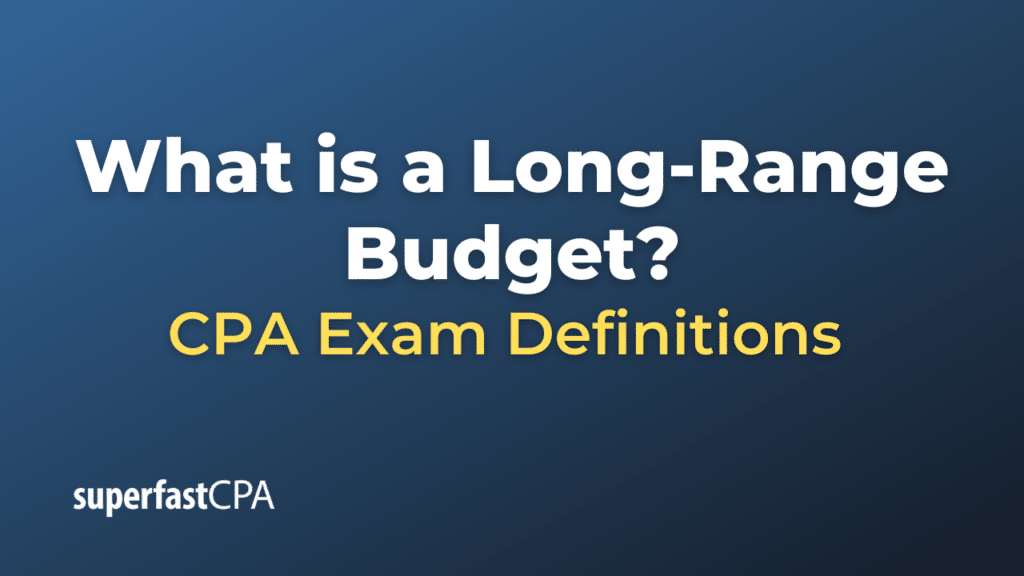Long-Range Budget
A long-range budget, also known as a strategic budget or a long-term budget, is a financial plan that outlines a company’s projected income and expenses over an extended period of time, typically between three to five years, though it can extend to ten years or more in some cases.
Unlike an annual budget, which focuses on the company’s financial situation for the upcoming year, a long-range budget is used to plan for the company’s financial future over a much longer period. It’s based on the strategic objectives of the company and helps in setting financial goals, planning investments, identifying potential challenges, and making strategic decisions for the future.
This type of budget generally includes projections for major revenue and expense items, capital expenditures, cash flows, and key financial ratios. It’s generally less detailed than an annual budget but gives a broader overview of the company’s financial trajectory.
A long-range budget requires making assumptions about future business conditions, including market trends, economic conditions, technological advancements, and competitive landscape. As such, it should be reviewed and updated periodically as these conditions change.
Long-range budgets are particularly useful for companies in industries that require significant lead time for business activities, such as manufacturing or construction, and for companies planning for major strategic initiatives like expansion into new markets or launching new products.
Example of a Long-Range Budget
Let’s use an example of a technology company, TechCorp Inc., that is planning to expand its business operations.
TechCorp Inc. is currently operating in the U.S. and wants to expand its operations into Europe and Asia over the next five years. To plan for this expansion, TechCorp Inc. creates a long-range budget.
Here’s a simplified version of what this budget might include:
- Revenue Projections: TechCorp estimates the revenue it expects to generate in each new market, based on market research and sales forecasts. It projects that revenue will grow at a certain rate each year as it establishes a presence in these new markets.
- Expense Projections: TechCorp estimates the costs associated with expanding into these new markets. These costs might include setting up offices, hiring and training new employees, marketing and advertising, regulatory compliance, and ongoing operational expenses.
- Capital Expenditures: The budget also includes projected investments in long-term assets, like new office buildings or equipment.
- Cash Flow Projections: The budget outlines the expected cash inflows and outflows over the five-year period, which can help TechCorp manage its liquidity and plan for any financing needs.
- Key Financial Ratios: TechCorp may also calculate certain financial ratios, like return on investment, to evaluate the financial viability of its expansion plan.
Throughout the five-year period, TechCorp would regularly review and update this long-range budget as it gathers more information and its business circumstances change. This ongoing budgeting process allows TechCorp to strategically manage its financial resources and align its financial planning with its long-term business strategy.














